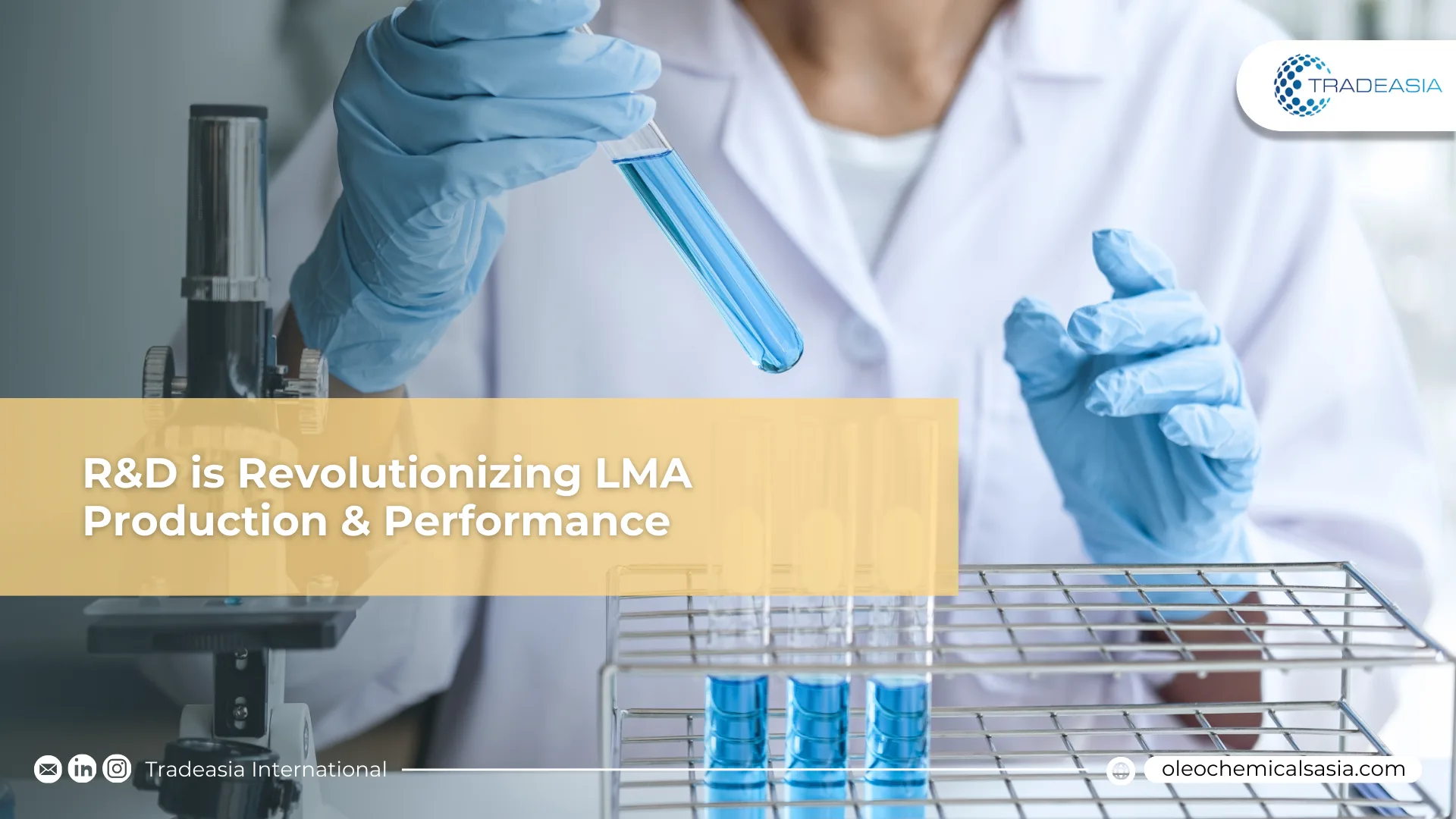Article
16 September 2025
R&D is Revolutionizing LMA Production & Performance
Palm Derivatives

Table of Content
- Forging a Greener, More Efficient Process
- From Higher Purity to Zero Waste
Article
16 September 2025
Palm Derivatives

For a foundational oleochemical like Lauryl Myristyl Alcohol (LMA), the frontier of innovation begins not in a cosmetic lab, but within the production process itself. Cutting-edge Research & Development is currently reshaping how LMA is made, relentlessly pursuing improvements that lower costs, enhance sustainability, and achieve unprecedented levels of purity. This focus on process excellence is a strategic imperative, designed to strengthen the entire palm-based value chain for the decades to come.
For global consumers of LMA, these production advancements are not just academic; they translate into higher quality, more reliable products. At Tradeasia International, we partner with producers at the forefront of this innovation, ensuring our clients receive oleochemicals that meet tomorrow's standards. We believe that a superior supply chain begins with a superior production process, delivering not just a product, but a promise of quality.
The core of LMA production is undergoing a green transformation, led by a revolution in catalyst technology. R&D is actively moving the industry away from traditional catalysts toward more efficient solid and enzymatic options. The results from pilot programs are compelling, with these new catalysts demonstrating the ability to reduce energy consumption by up to 15% and accelerate hydrogenation, cutting reaction times by 20%. These are not minor tweaks; they represent a significant reduction in both the carbon footprint and the final cost of the product, creating a powerful competitive advantage.
Simultaneously, R&D is pushing the boundaries of product quality through advanced purification technologies. While 99.5% purity has long been the industry standard, new fractional distillation methods are making "ultra-pure" grades of 99.8%+ commercially viable. This opens the door to sensitive, high-value applications in pharmaceuticals and specialty cosmetics. At the other end of the process, innovation is turning waste into wealth. R&D in waste valorization is creating pathways to convert byproducts into valuable bio-solvents, a strategy that can boost the overall profitability per ton of feedstock by an estimated 3-5%.
Sources:
Technical Specifications and Production Methods for Fatty Alcohols
Advancements in Catalysis for Oleochemical Production - Industrial & Engineering Chemistry Research
Global Oleochemical Process Technology Report - Sustainable Chemistry Consultants
We're committed to your privacy. Tradeasia uses the information you provide to us to contact you about our relevant content, products, and services. For more information, check out our privacy policy.
Leave a Comment